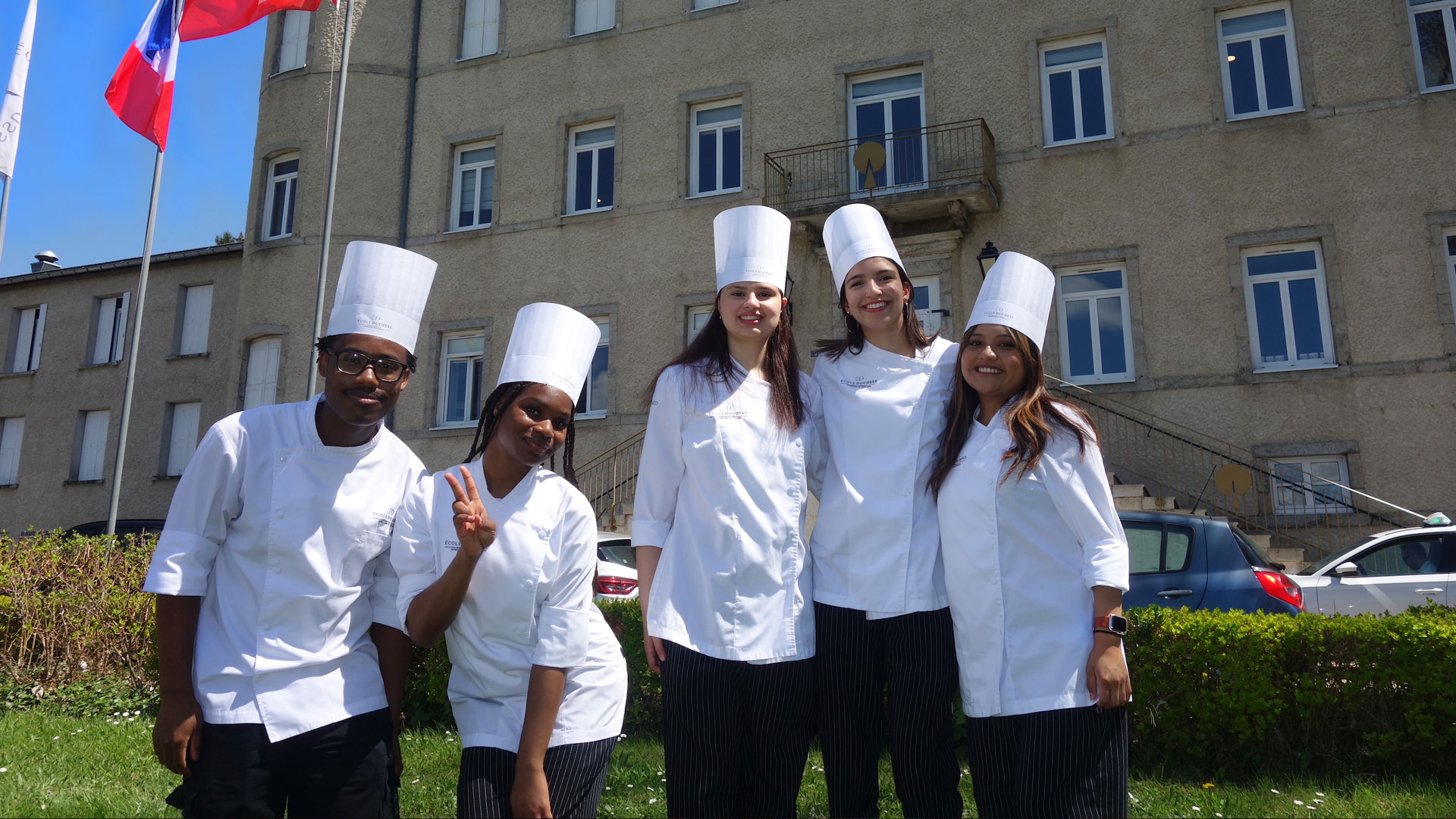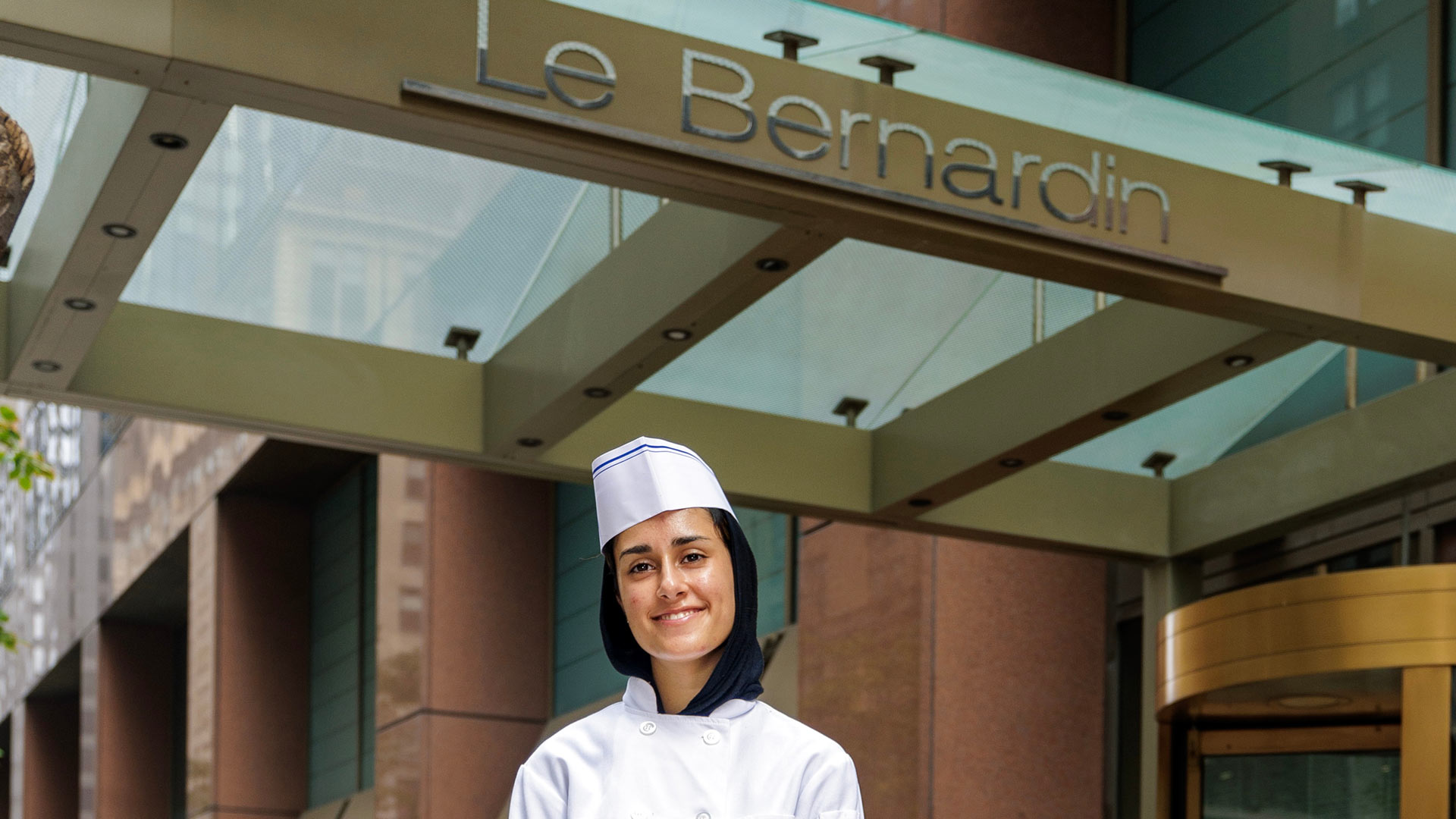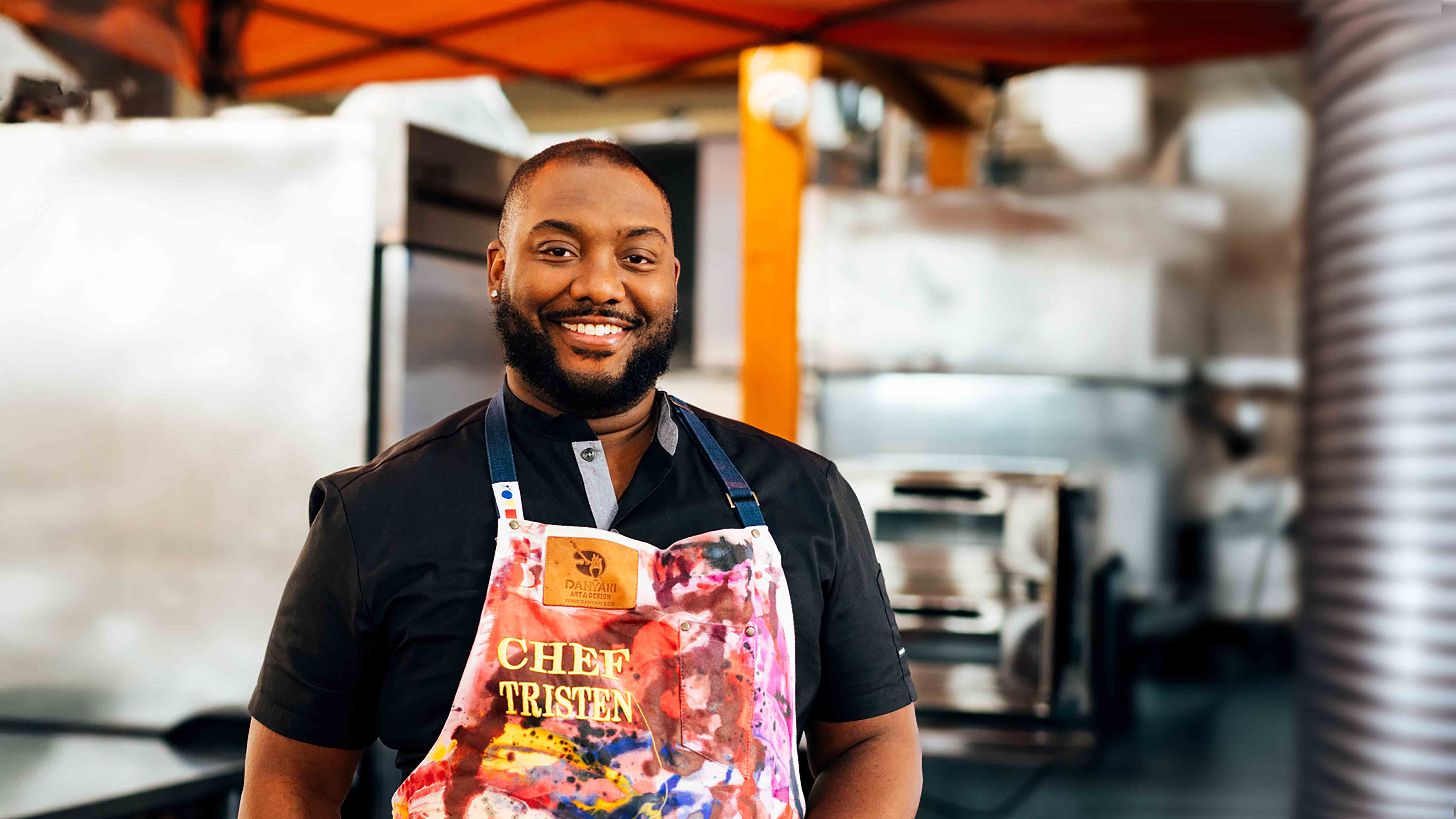JWU Recipes: Butternut Squash Risotto
When you think of coveted culinary ingredients, saffron, truffle, and Wagyu beef come to mind. Rice does not. And yet, what the humble grain lacks in allure, it makes up for in versatility. It can be swaddled in nori and cradle eel or tuna in sushi. It can create a bed for curry and temper the heat. Take it to New Orleans and it mingles with Andouille sausage, shrimp and tomato in Jambalaya. Or let it bathe in milk, sugar, and vanilla bean for a spoonable pudding dessert. You can even introduce it to a pinch of coveted saffron and steam it with mussels, calamari and peas for Paella.
A chameleon in the kitchen, rice’s importance cannot be overlooked across cultures and time.
For Annalis Melendez '21, a senior in the Culinary Arts bachelor of science degree program at Johnson & Wales University (JWU), rice was where her love of cooking began. Instead of watching afternoon cartoons while her mother was at work, young Annalis was captivated by the scene of her Puerto Rican grandmother stirring a pot of rice in her Brooklyn kitchen. “She showed her affection through cooking,” Annalis remembered.
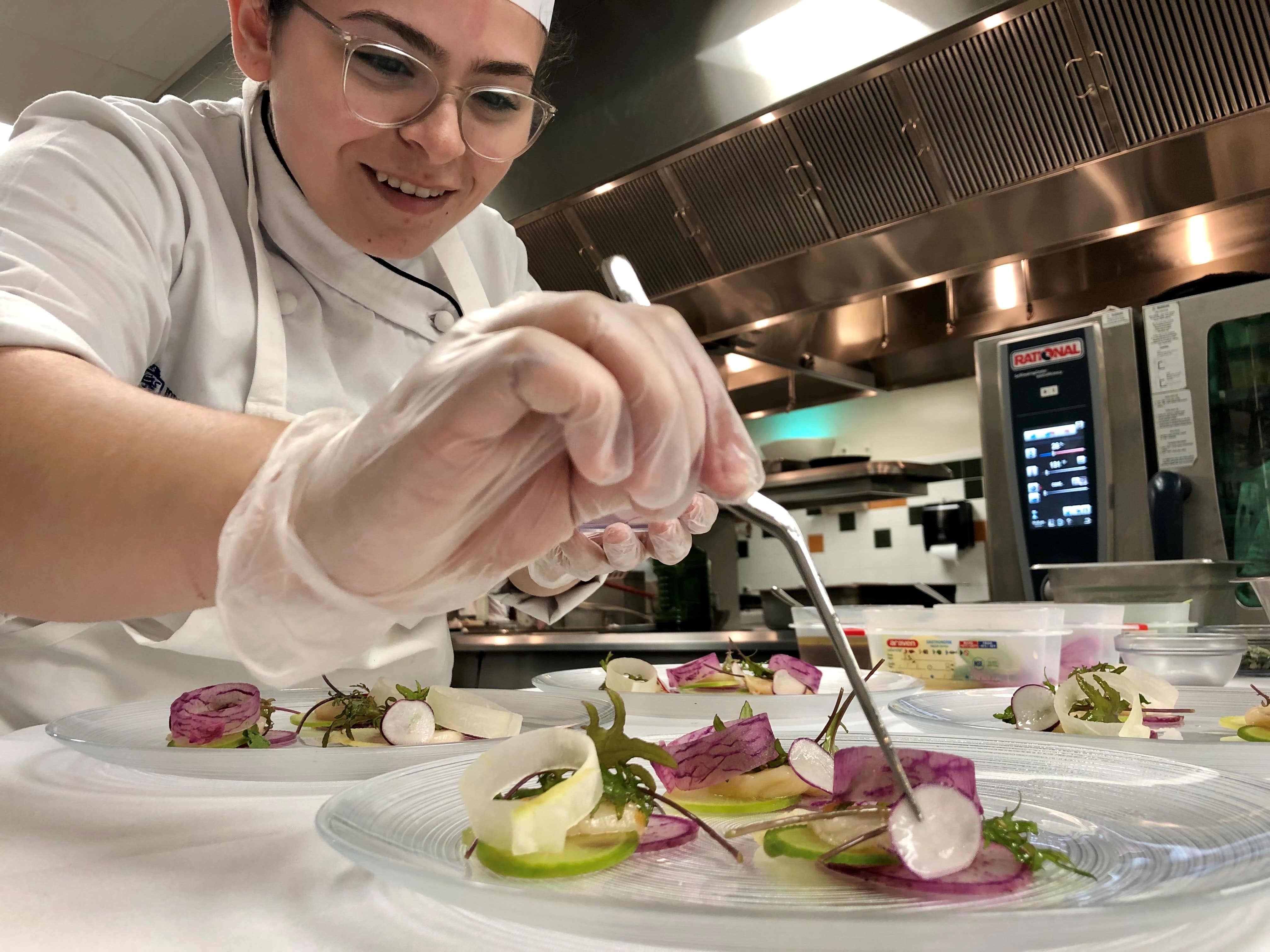
ANNALIS MELENDEZ '21 HONED HER FINE DINING SKILLS AT JWU.
Her family’s love of cooking and good food was passed on to Annalis. She attended a culinary high school in New York City and, after winning a culinary competition, earned a four-year scholarship to JWU. “Johnson & Wales was my first choice,” she said.
Now, on the cusp of graduation in May, Annalise has her heart set on a career in fine dining. Her time at JWU has prepared her through courses on plating and has honed her creativity and skills. On working in a fine-dining restaurant, she said, “It can be very competitive, and you have to be passionate. Passion pushes you.”
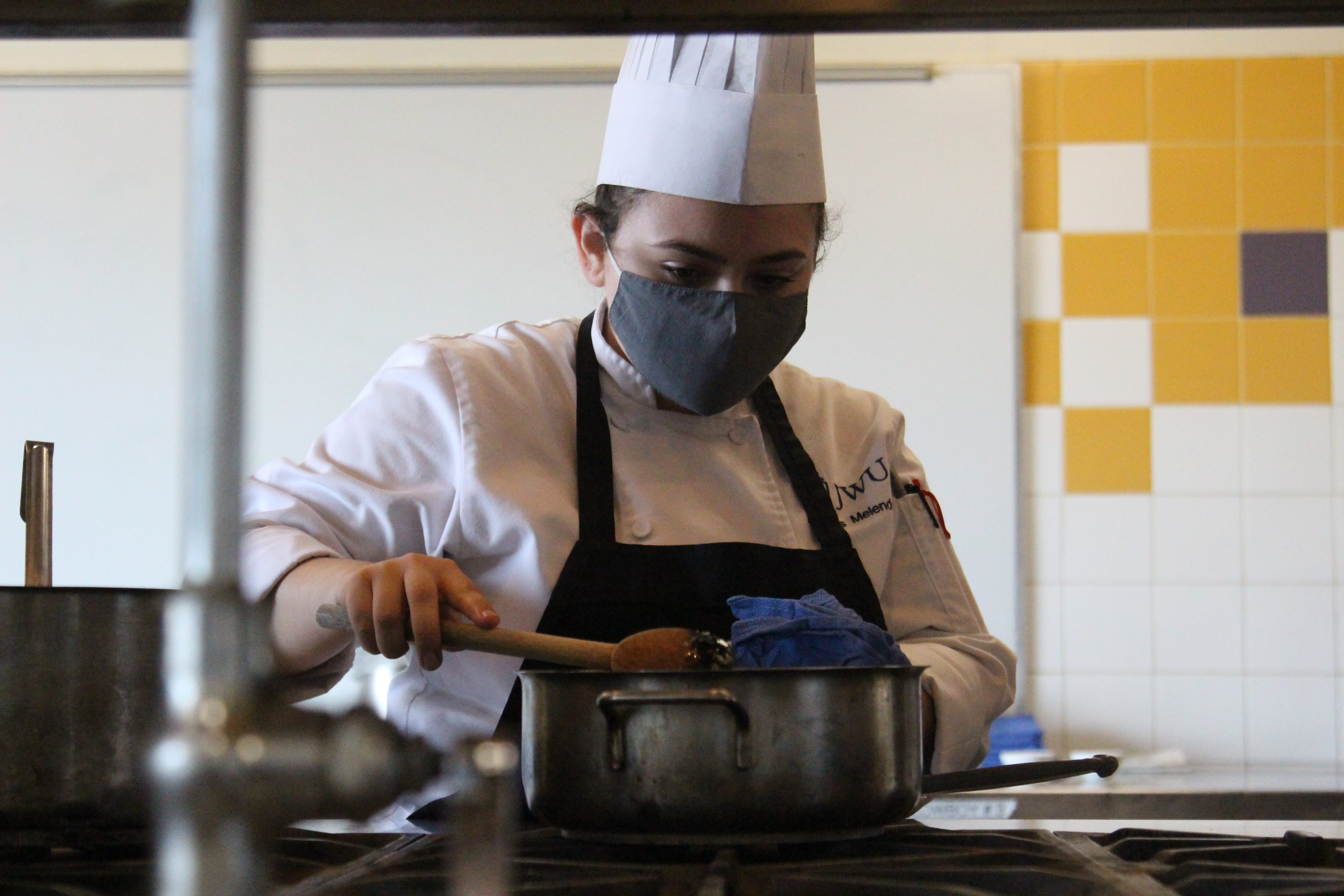
Think Like a Chef: Secrets to the Best Risotto
Risotto is a dish that many home cooks reserve for enjoying at restaurants. But with a little attention to quality ingredients and patience at the stovetop, five-star results are well within reach. “Constant stirring is the hardest part,” said Annalis. “Make sure that you are stirring just enough so that the bottom isn’t sticking.”The type of rice matters (Arborio is the traditional grain; see “Types of Rice” below) and the main ingredients count. According to Annalis, chicken stock is key and homemade is best. In a recipe where ladle-by-ladle stock is added to the simmering grain, “the rice is absorbing all that flavor all the time, so it has to be good flavor,” she said. Also, hot stock is key, as its heat is a major factor in cooking the rice.
As for the Parmesan, seek out DOP Parmesan-Reggiano and avoid the pre-grated stuff at all costs, which is “more affordable, but it’s processed and will not melt the same,” Annalis stated.
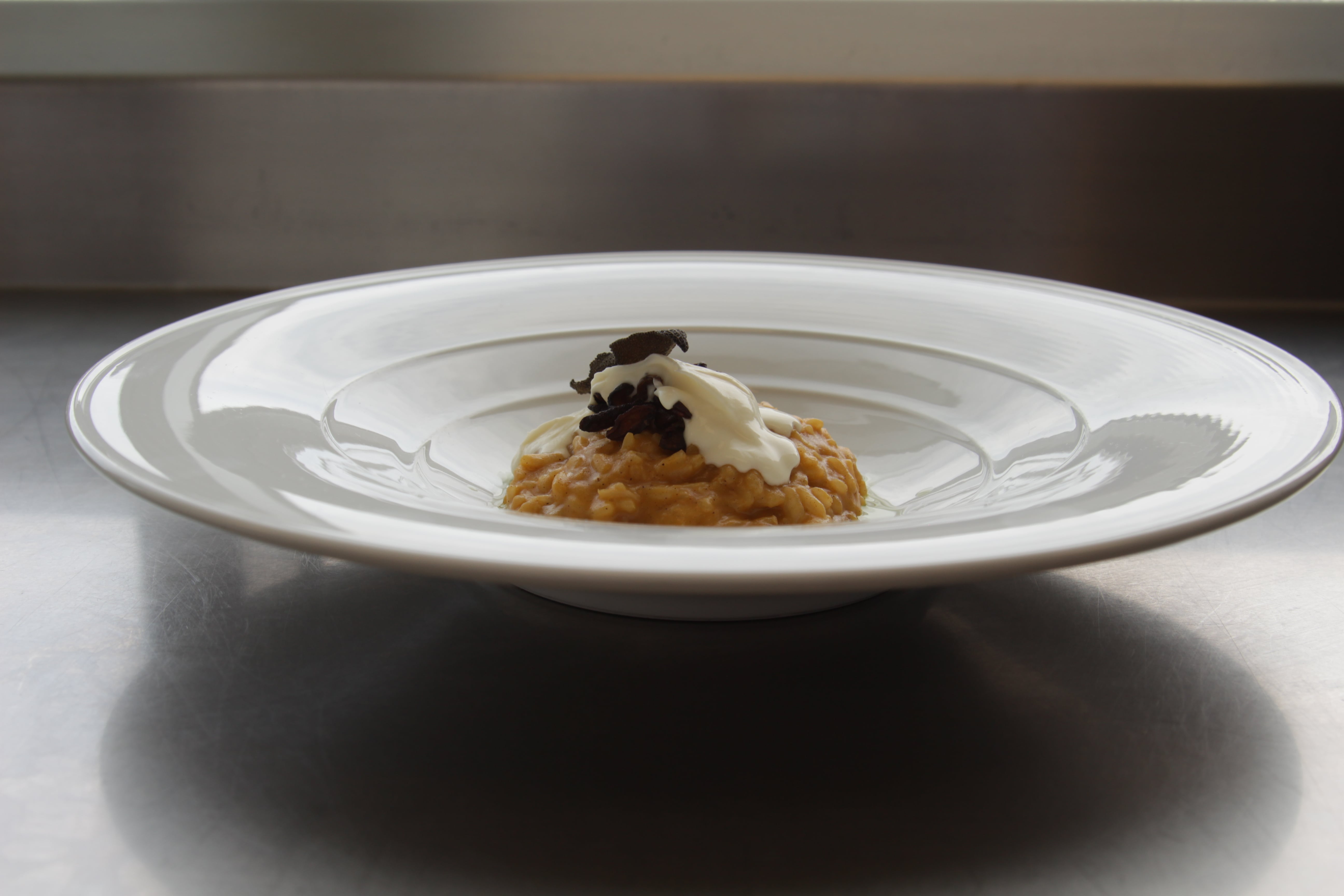
Butternut Squash Risotto
Makes: About 8 servings
Substitute vegetable stock for chicken stock for a vegetarian option. You can also use lemon juice instead of wine, if desired; dilute with half-part water.
For the butternut squash puree:
2 pounds butternut squash, peeled and diced (about 2 cups)
1 tablespoon extra-virgin olive oil ¼ teaspoon ground nutmeg (optional)
Salt and pepper to taste
For the risotto:
6 cups chicken stock (homemade preferred; see “Stock Value” below)
1 tablespoon extra-virgin olive oil
2 shallots, finely diced
2 tablespoon unsalted butter
3 garlic cloves, minced
2 cup Arborio rice
½ cup white wine
1 cup butternut squash puree
1 cup grated parmesan cheese
Salt and pepper to taste
Garnish with crème fraiche or as desired
1. In a medium saucepan over medium heat bring the chicken broth to simmer. Reduce heat to low and keep warm.
2. Preheat the oven to 400 degrees and line a baking sheet with parchment paper or grease with nonstick spray.
3. In a bowl, toss diced butternut squash with extra-virgin olive oil, nutmeg, salt, and pepper. Arrange squash on the lined baking sheet in one even layer. Bake 25-30 minutes or until the squash is tender and lightly browned.
4. Remove from oven, and place the squash into a blender. (Remove stopper from blender lid and hold a towel over top to avoid hot splashes.) Puree on high until the mixture is silky and smooth. Add water, if needed, to combine.
5. For the risotto, in a large pot, heat the extra-virgin olive oil on medium heat. Add shallots and sauté 3-4 minutes or until translucent. Add butter and garlic, and sauté for another 1-2 minutes.
6. Add rice stir to coat grains; sauté about a minute or until rice produces a slightly nutty aroma. Pour wine into pot, and stir occasionally until wine is fully absorbed by the rice.
7. With a ladle, add about 1 cup hot stock from simmering pot. Stirring often, cook until the rice has mostly absorbed liquid. Add remaining stock about 1 cup at a time, continuing to allow the rice to absorb each addition of stock before adding more. Cook, stirring often, until risotto is al dente (it should be soft, but has a slight bite to it) and creamy, not mushy, about 25 minutes.
8. Turn off the heat, and stir in the butternut squash puree. Stir in grated Parmesan, and serve.
Stock Value
If you’re just using a splash of chicken stock or marrying it with bold flavors, boxed or concentrated stock can pass for the real thing. But in a dish like risotto where it takes center stage, it pays to make it from scratch. Yes, it takes a bit of effort and time, but it’s largely hands-off. Here’s a tried-and-true recipe from JWU’s best chefs.
Chicken Stock
1 pound chicken bones
1 cup each carrots and celery, peeled, diced
2 cups onion, diced
1 cup leeks, sliced 2-inch pieces (optional)
10 each whole black peppercorns
5 each bay leaves, parsley stems with leaves, and thyme sprigs
1. Preheat the oven to 400 degrees.
2. Line a baking sheet with parchment paper or lightly grease with non-stick spray and arrange the raw chicken bones in one even layer. Bake for about 20 minutes or until light and golden in color.
3. Transfer bones and any pan juices into a large pot. Fully submerge the bones in the 5-6 quarts of water. Add all the chopped vegetables, herbs and spices to the pot.
4. Bring to a boil and then lower to a simmer. Simmer for about 1-2 hours. As it simmers, use a solid spoon to skim the surface and edges of the pot.
5. Strain the stock through a fine-mesh strainer. Discard solids. If using immediately, keep strained stock warm in a pot on low heat. If saving for later, let cool to room temperature, cover, and refrigerate or freeze until ready to use.
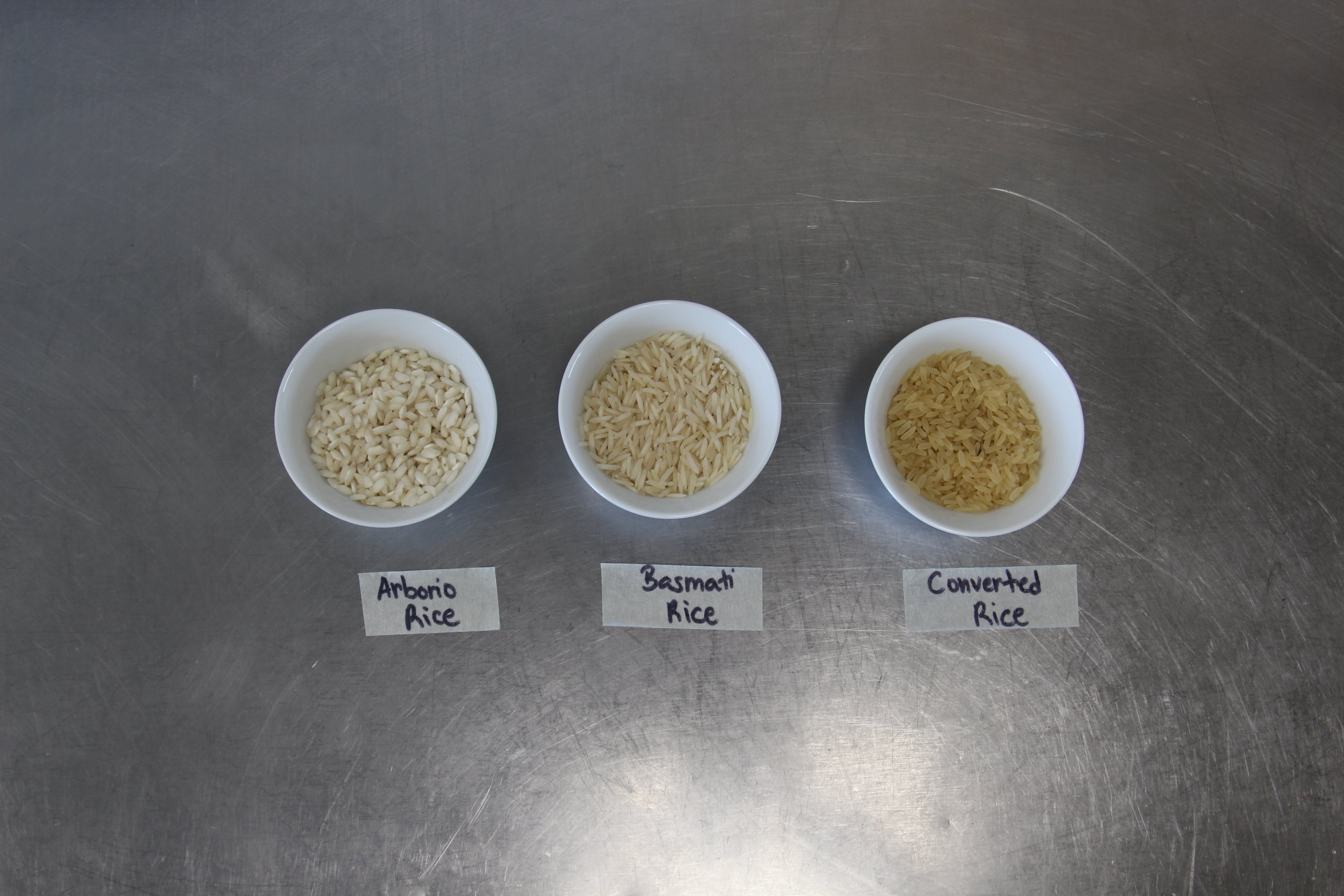
Types of Rice
Arborio: A crucial ingredient in giving risotto its signature creamy texture, Arborio should be rinsed before cooking to remove some of its starch. Rinse in water until water runs clear.
Basmati: A type of long grain rice, this traditional Indian variety is extremely fragrant—some claim it smells like popcorn. “You can use this type any time a recipe calls for long grain,” said Annalis.
Converted: Also known as parboiled rice, this yellow, more processed grain is inexpensive. “This is a good choice for a pilaf,” said Annalis. Its grains cook sticky instead of separate.
